|
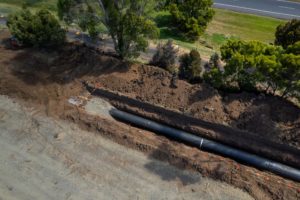
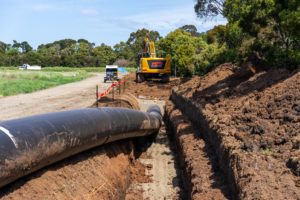
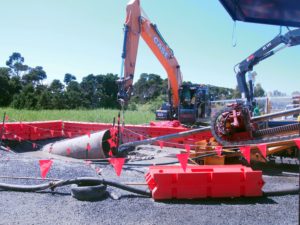
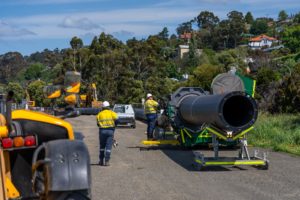
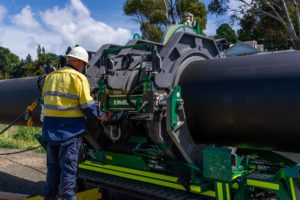
|
Project
As part of the Tamar River Health Action Plan (TERHAP) in October 2023 construction began on a new 3km underground sewage pipeline, consisting of a 1120m DN1000 oen trench installed pipe and 2 x DN 900 Horizontal Direction Drilling (HDD) sections (540m and 1100m long). The construction works involve installing large pipes which will be laid up to 40 metres under the estuary riverbed. The construction work is primarily drilling beneath the riverbed of the estuary and land-based trenching. The project is estimated to cost $47million, making it one of the largest pipeline infrastructure projects in the southern hemisphere. This transformative pipeline project will increase TasWater’s capacity to transfer sewage and stormwater, significantly reducing the frequency and volume of overflow events. It will help to improve the health of kanamaluka/Tamar estuary and the environment that surrounds it.
Were there unique challenges?
• Two HDD river crossings, one 540m and the other 1100m long which are 45m under the river bed though the challenging geotechnical conditions
• The pipe was manufactured in Toowoomba QLD. Delivering the pipe down east coast Australia and then across the Bass Straight required attention to detail in packaging and logistics
• A large bore pipeline requires large welding equipment on site, careful planning, and utilisation of trench space
• Installation of the pipeline in a residential area with high public exposure.
What were the benefits of the project to Launceston?
The TERHAP project will improve the operation of Launceston’s combined system which manages the flow of both sewage and stormwater. The projects will help to divert sewage and stormwater flows away from kanamaluka/Tamar estuary at an estimate flow capacity of 900 litres per second. This will reduce the frequency and volume of overflow events and presence of waste-related bacteria concentrations in kanamaluka/Tamar estuary, improving the overall health of the waterway. Once completed the result will be an efficient sewerage system, helping to improve the health of kanamaluka/Tamar estuary and the environment that surrounds it.
How did Vinidex provide a solution?
Vinidex provided support to the final pipeline design to minimise cost and provide optimum fluid flow. Even after the contract was signed, Vinidex worked with the TasWater’s Capital Delivery Office project team to accommodate changes to fitting requirements. The large pipe sizes and pressure requirements for the pipeline necessitated large wall thicknesses. To achieve even wall thickness around the circumference of the pipe, a unique low slump resin was specially sourced for the project. The 3km of large bore pipe was manufactured at Vinidex’s world class extrusion facility in Toowoomba, QLD. This required careful logistic planning to safely load and restrain the pipe for delivery to Tasmania. Vinidex also provided specific pre-slinging of the pipes requested by the welding contractor to assist in unloading the pipe. Transporting the pipe down Australia’s east coast and across the Bass Straight required coordination of two transportation companies utilising the same trailer to minimise handling of the pipe. Deliveries were also closely coordinated with TasWater to to meet a tight delivery schedule. Vinidex produced one of the largest wall thickness pipes ever made by the Australian manufacturer, with the DN900 SDR9 pipe having a minimum wall thickness of 100mm while the DN1000 SDR11 has a minimum wall thickness of 90.2mm. The consistent wall thickness provided by the low slump resin facilitated the welding of pipe and provided for a seamless installation.
Download PDF version here.
|






